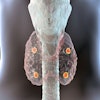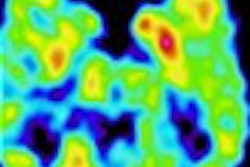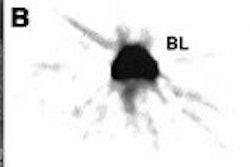A new study on the costs of PET -- based on information reflecting actual expenses rather insurance reimbursement -- found that U.S. centers can typically break even or make money by performing at least two PET scans per day.
Researchers from Stanford University Medical School in Stanford, CA, and the U.S. Veterans Affairs (VA) Health Economics Resource Center in Menlo Park, CA, published their summary of direct, indirect, and capital costs from eight PET centers in the August issue of the American Journal of Roentgenology.
The authors acknowledged that their small sample of teaching hospitals might have generated atypical findings. For example, six of the eight PET facilities surveyed were located at VA medical centers. However, the authors noted that VA physician salaries have become more competitive in the last decade, and previous studies have found no significant differences in costs at VA and nonfederal hospitals.
The researchers did assert an advantage to their study methodology, which involved gathering information from centers already participating in another clinical study.
"This convenience sample is not necessarily representative of all PET centers; however, it allowed us to capitalize on the fact that the directors of the centers were willing to participate in research, and to share potentially sensitive cost data with us," wrote lead author Magdalena Berger and colleagues. "Because these centers are functioning PET centers, our study is an improvement over previous modeling studies and provides more up-to-date information than the prior estimates" (AJR, August 2003, Vol. 181:2, pp. 359-365).
In contrast to earlier findings, the latest research indicates that PET centers synthesizing 18-F-fluorodeoxyglucose in their own cyclotrons can generally do so for less money ($150 to $922 per dose, mean of $528) than those purchasing FDG from outside manufacturers ($425 to $1,155 per dose, mean of $616). The discrepancy could be due to under- or overestimation of costs in any of the studies, the authors stated, or perhaps due to the failure to account for the use of cyclotrons for other activities, including production of FDG for research purposes.
Having spent an average of $1.9 million to purchase a dedicated PET scanner, the centers in the survey incurred roughly 35% of their operating expenses in capital costs. The largest set of expenses, however, was the 44% attributed to physician and other staff costs.
Overall, the mean annual operating cost for an FDG-producing PET center was $1.27 million, or $1,885 per scan. The mean annual operating cost for an FDG-purchasing center was $1.45 million, or $1,898 per scan. "These estimates are consistent with the results of previous analyses, which reported a PET scan cost between $1,059 and $4,787," the authors wrote.
Encouragingly, the average cost per scan was also lower than the $2,185 per-scan national Medicare reimbursement used by the researchers as the break-even point. In 2000, Medicare reimbursement ranged from $2,185 for a lung PET scan up to $2,301 for other indications and body parts.
"Centers with low scan volumes have difficulty keeping costs below Medicare reimbursement rates," the researchers stated. "However, scan volume is not the only important factor in determining the cost per scan, as shown by one site that had costs above the Medicare reimbursement rate despite obtaining approximately 700 scans per year."
By Tracie L. ThompsonAuntMinnie.com contributing writer
August 15, 2003
Related Reading
Precision opens first PET center, July 23, 2003
Financial modeling assesses viability of imaging center venture, July 14, 2003
PET budgeting can pave the way to profitability, May 22, 2003
Imaging centers ready to handle cost-conscious market, April 3, 2003
Copyright © 2003 AuntMinnie.com




















